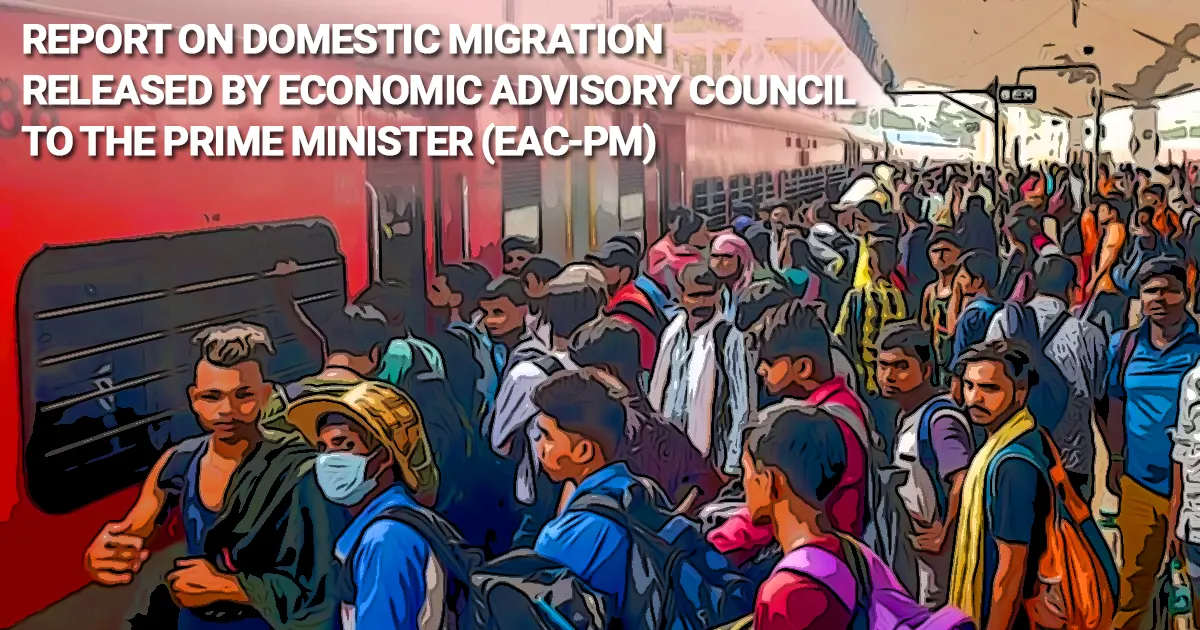GS3 – ECONOMIC DEVELOPMENT

The Economic Advisory Council to the Prime Minister (EAC-PM) has released a report titled ‘400 Million Dreams,’ which examines the evolving patterns of internal migration in India since the 2011 Census. Internal or domestic migration refers to the movement of people within a country from one region to another.
Push Factors: These include a lack of job opportunities, natural disasters, inadequate quality of education and healthcare, and more.
Pull Factors: These include economic opportunities, better living standards, and the presence of peace and stability.
Key Findings of the Report:
- Decline in Domestic Migration Numbers: Domestic migrant numbers have dropped by approximately 12%, from 45.57 crore to 40.20 crore between 2011 and 2023. The migration rate has also decreased from around 38% to an estimated 29% in 2023.
- Migration Dynamics:
- Short-distance migration is more common, with mobility decreasing as the distance increases.
- Migration tends to originate primarily from areas around major urban centers like Delhi, Mumbai, Chennai, Bangalore, and Kolkata.
- Primary Migration Routes: The major migration flows include routes like UP to Delhi, Gujarat to Maharashtra, Telangana to Andhra Pradesh, and Bihar to Delhi at the state level.
- Regional Shifts in Migrant Share:
- There has been an increase in the share of migrants arriving in West Bengal, Rajasthan, and Karnataka.
- Conversely, Maharashtra and Andhra Pradesh have seen a reduction in their share of total migrants.
Reasons for the Decline in Migration:
- The decline can be attributed to improved infrastructure (roads, education, healthcare, and public transport), as well as enhanced social security measures in the regions people are migrating from.
- There has been localized economic growth, with job opportunities being created closer to rural areas, reducing the need for long-distance migration.
Steps Taken for the Welfare of Domestic Migrants in India:
- Inter-State Migrant Workmen (Regulation of Employment and Conditions of Service) Act, 1979: This law aims to prevent human rights violations among migrant workers.
- Ayushman Bharat Pradhan Mantri Jan Arogya Yojana (PMJAY): This initiative offers up to Rs. 5 lakh in health coverage for migrant workers, covering secondary and tertiary health needs.
- One Nation One Ration Card Scheme: This program allows migrant workers and their families to access ration benefits nationwide.




